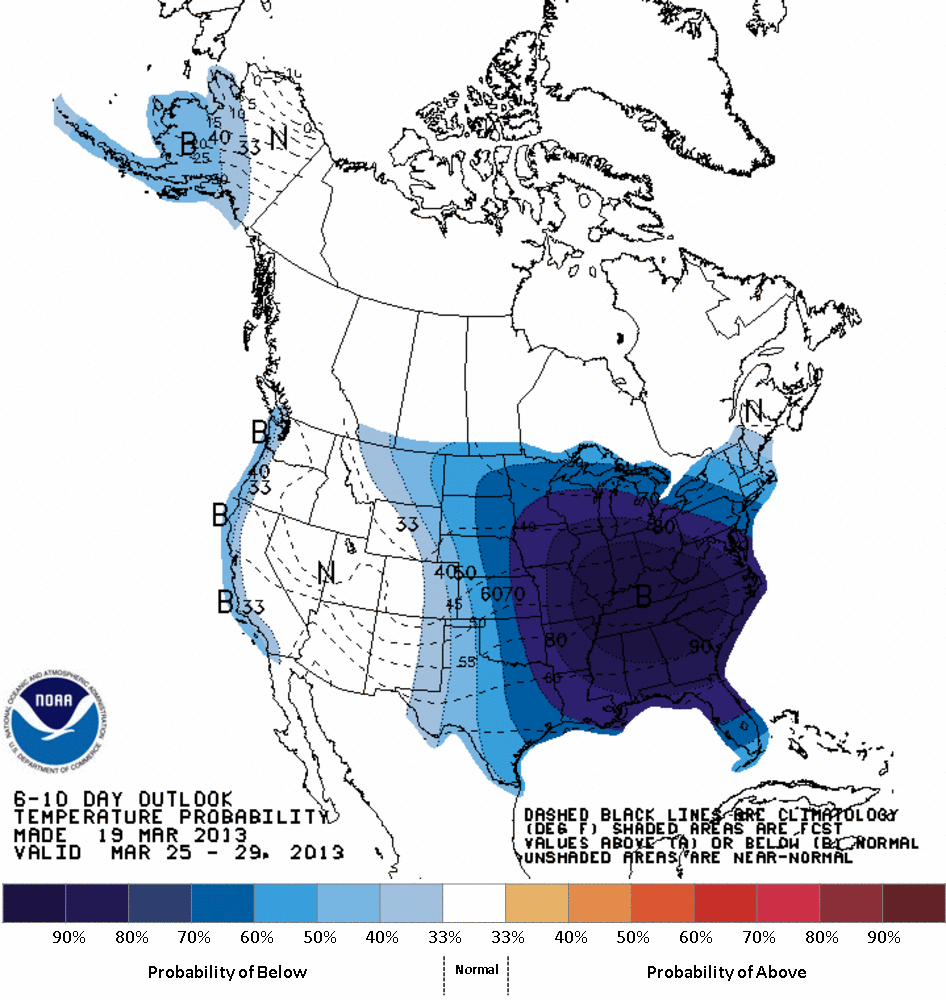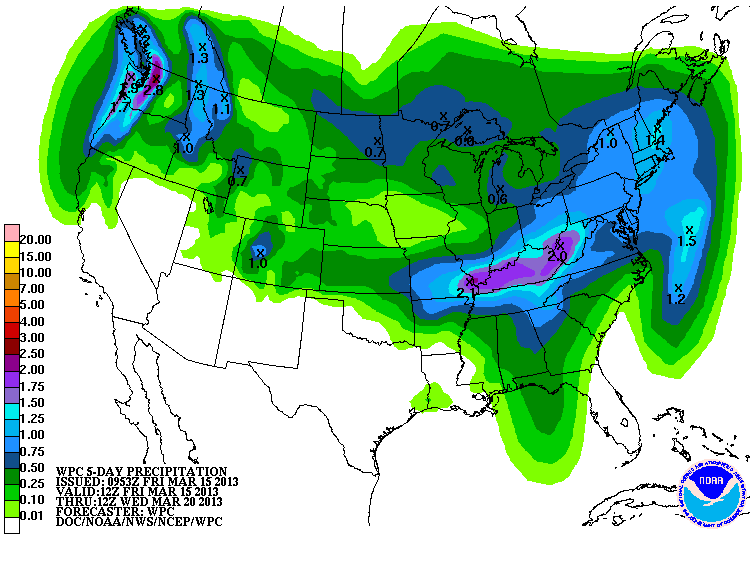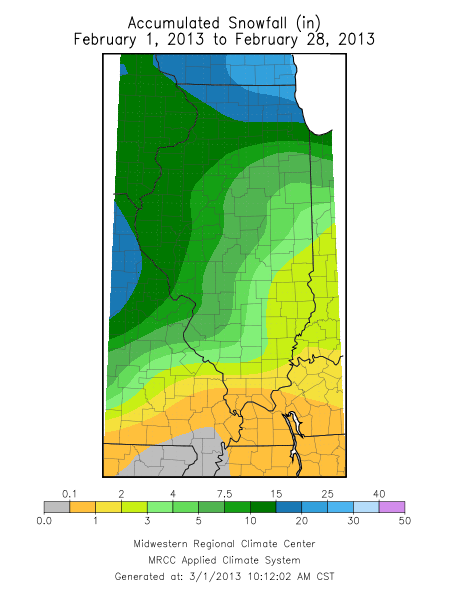You can find 4 and 8-inch soil temperatures for Illinois on the Water Survey’s web site at www.isws.illinois.edu/warm/soiltemp.asp. These data are from a network of 19 sites around Illinois that is maintained by the Survey.
Below are the maps of what the 4-inch soil temperatures looked like on Wednesday and a year ago on the same date. This year the soil temperatures are barely above freezing in northern Illinois and barely above 40 degrees in southern Illinois. On the same date in 2012, the 4-inch soil temperatures were in the upper 50s and lower 60s across the state.


Cold March
I dropped my car off at the shop for some brake work this morning here in Champaign and decided to walk to work. The air temperature was 21 degrees and the wind chill was 4 degrees. That was an uncomfortable stroll even with a winter coat, hat, and gloves. A year ago this morning (March 20, 2012), the air temperature was 63 degrees and well on its way up to a high of 82 degrees, a record high for this date.
So far this year, the statewide March temperature is 33.3 degrees. A year ago through this date, the statewide temperature was 51.1 degrees. That’s a whopping 17.8 degree difference. March went on to become the warmest March on record at 55.3 degrees, 14.2 degrees above the long-term average monthly March temperature of 41.1 degrees.
The rest of March does not look promising. The 1-5 day forecast shows temperature 10 to 14 degrees below average for Illinois. The 6-10 and 8-14 day forecast show widespread cold weather across Illinois and the central US. Figures below.
The long-term average temperatures for March were calculated from the 1981-2010 period.



March Off to Cold, Wet Start
So far, March has been both colder than average across all of Illinois and wetter than average across western and northern Illinois. The statewide temperature for March 1-14 was 32.5 degrees, 5.4 degrees below average. That stands in stark contrast to last March when the statewide temperature for March 1-14 was 45.2 degrees, 7.3 degrees above average. That is a 12.7 degree difference between the two periods.
Precipitation through the morning of March 15 (Figure 1) ranged from less than an inch in southern Illinois to over 2 inches in western Illinois. Precipitation was below average in southern and eastern Illinois (Figure 2) and above average in western and northern Illinois. The dryness in southern and eastern Illinois is not a major concern at this point because of wet conditions in those areas in January and February.
The latest NWS forecasts show that rains of 1 to 2 inches or more could fall in the southern third of Illinois over the next five days (Figure 3). Also their 6-10 day and 8-14 days forecast show that colder and wetter than average conditions will prevail for the rest of March. Because of recent rains and melting snow, the NWS has issued flood warnings today on portions of the Mississippi, Illinois, and Wabash Rivers (Figure 4).




Winter Finally Arrives in Illinois In February
February
The preliminary numbers are in and winter finally arrived in February. The statewide temperature for February finished at 29.3 degrees, which was 1.5 degrees below average. The statewide precipitation was 2.7 inches, which was 0.6 inches above average. The precipitation total represented both rainfall and the water content of any snow. Snowfall for February ranged from less than an inch in southern Illinois to over 20 inches in the far northeast corner of the state.
Winter
For the core winter months of December, January, and February, the statewide temperature was 31.8 degrees, which was 2.8 degrees above average. The statewide average precipitation was 9.1 inches, 2.2 inches above average. It was the 11th wettest winter on record for Illinois. Snowfall for those three months ranged from less than 10 inches in east-central Illinois to over 20 inches in parts of far western and northern Illinois, as well as in a band across southern Illinois.
Maps
Here are the maps of precipitation and snowfall for February.





